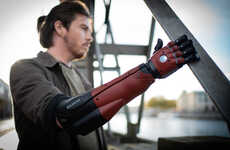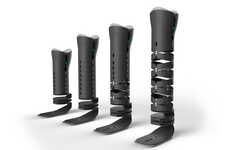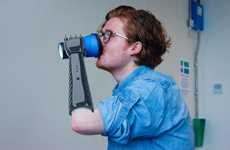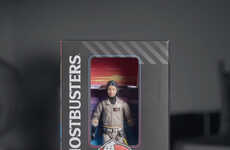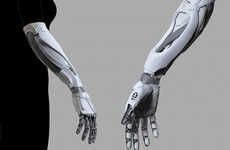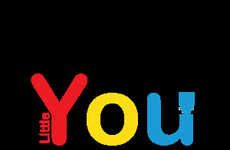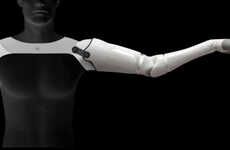
Autodesk is Using 3D-Modeling to Create Superhero Themed-Limbs
References: bornjustright & digitaltrends
Autodesk's Pier 9 location in San Fransisco recently put together a program called Superhero Cyborgs 2.0 that allows kids to design and put together their own children's prosthetics that encapsulate superpowers they wish they had. The program utilizes 3D-printing and modelling to bring the designs to life and provide children with simulated limbs that they themselves have designed. The designs capture the imaginative aspect of the children's minds as well, by turning their concepts into functioning gadgets.
The Superhero Cyborgs 2.0 initiative features a collaboration between Autodesk engineers and children working together with digital fabrication, 3D-printing and manufacturing to create prosthetic limbs inspired by heroes. For example, one participant named Jordan Reeves created a robotic arm that is able to inspire happiness by shooting glitter through a string that is pulled.
The Superhero Cyborgs 2.0 initiative features a collaboration between Autodesk engineers and children working together with digital fabrication, 3D-printing and manufacturing to create prosthetic limbs inspired by heroes. For example, one participant named Jordan Reeves created a robotic arm that is able to inspire happiness by shooting glitter through a string that is pulled.
Trend Themes
1. Superhero-inspired Prosthetics - There is an opportunity for companies to create prosthetics that combine imagination and functionality through collaborations between engineers and children, utilizing digital fabrication and 3D-printing
2. Customizable Prosthetics - More companies can use 3D-printing and modeling to provide children with prosthetics that are unique to their individual preferences and needs
3. Child-engineer Partnerships - The idea of engineers working alongside children to create 3D-printed prosthetics can create innovation opportunities for the entire industry by incorporating the creativity of young minds
Industry Implications
1. Healthcare - The healthcare industry has the opportunity to incorporate 3D-printing and digital fabrication into the production and personalization of prosthetics for children
2. Manufacturing - Manufacturing companies can collaborate with engineers and children to create innovative solutions in the development of prosthetics, utilizing 3D-printing and digital fabrication
3. Education - Educational institutions can integrate 3D-printing and digital fabrication into their curricula to promote creativity and inspire students to create innovative solutions like in the Superhero Cyborgs 2.0 program
4.3
Score
Popularity
Activity
Freshness



